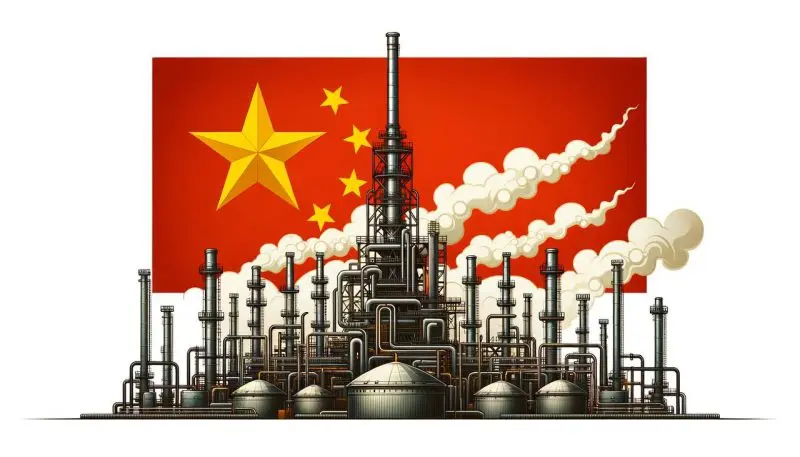
In a remarkable development for global energy markets, China’s oil output has reached an impressive 400 million tons in recent months, marking a new milestone for the world’s second-largest economy. This surge in oil production comes amid strong economic recovery and strategic initiatives aimed at boosting domestic energy security. But what does this achievement mean for both China and the broader energy market?
Record Growth in Oil Output
China’s oil production reached 400 million tons, showcasing a record-breaking increase in output. This rise can be attributed to several key factors:
1. Investment in Domestic Oil Fields
China has significantly increased its investments in domestic oil exploration and production. The country has been expanding and modernizing its oil fields, deploying cutting-edge technology to enhance recovery rates and maximize output. The development of new fields in northern and western China has played a key role in this growth.
2. Economic Recovery Boosting Demand
As China’s economy continues to recover from the pandemic, demand for energy resources, including oil, has surged. Industrial production, transportation, and manufacturing have all seen significant growth, driving up the need for fuel and raw materials.
3. Strategic Energy Security
With rising global energy prices and concerns over supply disruptions, China has focused on energy independence. By boosting its domestic oil output, the country aims to reduce its reliance on imports, particularly from volatile regions. This move aligns with China’s broader strategy to secure its energy future and maintain steady economic growth.
Implications for Global Energy Markets
China’s record oil output has several potential implications for global energy markets:
1. Reduced Dependence on Imports
China, the world’s largest importer of oil, has been striving to reduce its dependency on foreign oil sources. While its domestic output increase is significant, the country still relies heavily on imports, particularly from the Middle East and Africa. Nevertheless, the 400 million tons of oil production could help offset some of these imports, especially during periods of high global demand.
2. Potential Impact on Global Oil Prices
China’s increased oil production could have a moderating effect on global oil prices. If the country continues to ramp up its production, it could lessen the pressure on global oil prices that typically occur due to strong demand from top consumers like China and the U.S.
However, the dynamics between China’s domestic output and global oil supply chains are complex. In the long run, the additional production may help stabilize prices, but global market factors—such as OPEC+ decisions, geopolitical tensions, and shifting energy policies—will also play a significant role.
3. Increased Competition with Other Oil Producers
As China increases its domestic oil production, it may intensify competition with other major oil producers like the United States, Russia, and members of OPEC. These nations could feel the effects of China’s increased supply, especially if its output growth translates into a reduction in reliance on foreign imports.
4. Geopolitical Influence
Energy is often a key geopolitical tool, and China’s increased oil production will likely enhance its leverage on the global stage. With more control over its energy supply, China could potentially use this advantage in diplomatic relations, especially with energy-dependent countries.
Challenges Ahead
Despite the growth, China still faces significant challenges in maintaining this level of output:
- Environmental Concerns: Increased oil production often leads to environmental concerns, including pollution and land degradation. China will need to balance its oil ambitions with sustainable energy practices.
- Global Supply Chain Pressures: Even with increased domestic production, China’s reliance on global energy supply chains remains high. Disruptions in these chains, whether due to geopolitical tensions or natural disasters, could affect China’s energy security.
- Energy Transition: As China continues to ramp up its oil output, the government is also focused on transitioning to cleaner, renewable energy sources. The balancing act between traditional fossil fuels and renewable energy sources will be crucial to China’s long-term energy strategy.
Conclusion
China’s oil output hitting 400 million tons is a significant milestone, reflecting the country’s growing energy capabilities and its efforts toward achieving greater energy security. While this increase is poised to affect global oil dynamics, China will also need to navigate challenges related to the environment, supply chain dependencies, and its transition to cleaner energy sources.
For the global energy market, this achievement could signal a shift in the balance of supply and demand. As China continues to invest in both domestic production and renewable energy, its role in shaping the future of global energy markets will only become more influential.




